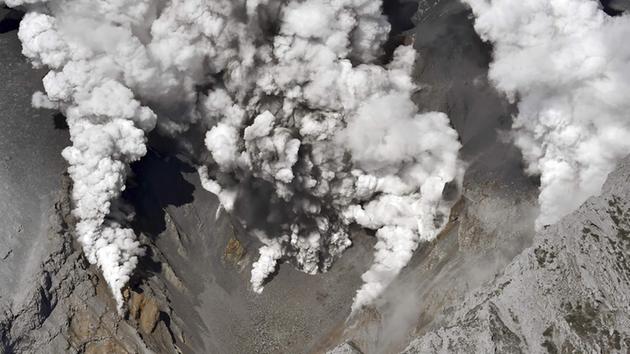The last time I set the date three years ahead of time to go to Japan, this happened:
and then this:
and of course shortly thereafter, this:
Shortly after I returned from Japan in 2011 I started planning for this year's return trip. I'm leaving for Japan in the very, very, very early morning. Shortly after I arrive, I should encounter this.
I tried to get a little footage showing what a category 4 typhoon looks like on the ground but apparently not that many people, once they're actually inside one, determine that going outside for a while to get footage is their best course of action. So, here's just a photo:
 I have to say I found this a bit surprising in view of the fact that people seem perfectly willing to stick their children's heads in the mouths of grizzly bear for a photo to amuse and one-up the neighbors with, or, you know, insert your stupidest photo-taking I found this one,
I have to say I found this a bit surprising in view of the fact that people seem perfectly willing to stick their children's heads in the mouths of grizzly bear for a photo to amuse and one-up the neighbors with, or, you know, insert your stupidest photo-taking I found this one,
but like the child/bear thing this involves someone else's being in danger rather than the photographer. So maybe, I don't know, there's something about category 4 typhoons that instill a certain amount of reasonableness in people. Maybe, you know, people who live in the world of typhoons are less likely to be stupid than people who live in the world of hurricanes.
I'm not sure the evidence bears this out however:
Whatever the truth of the matter, however, I will be flying in to Kyoto from the northeast just as typhoon Phanfone (sorry, if you're trying to pronounce that you're on your own) arrives from the southwest. I've been in hurricanes before, but in all cases I've been in the mountains in temperate climates, usually hours from the sea, which I understand not to be the friendliest environment for tropical storms.
And, who knows, maybe a class 4 typhoon could in a small way settle down the output of Ontakesan, the volcano that just blew in Japan. In any event I wish you whatever kind of weather you prefer; I'm guess at least that doesn't include volcanoes.
Whatever your preferences, if you know me, or if you've read much of my little blog, you know that I love rain. Swimming while walking in my street clothes, however, may be another matter. Also, whether or when I can next blog may be problematic. Anyway, じゃまたね、see you soon I hope.



